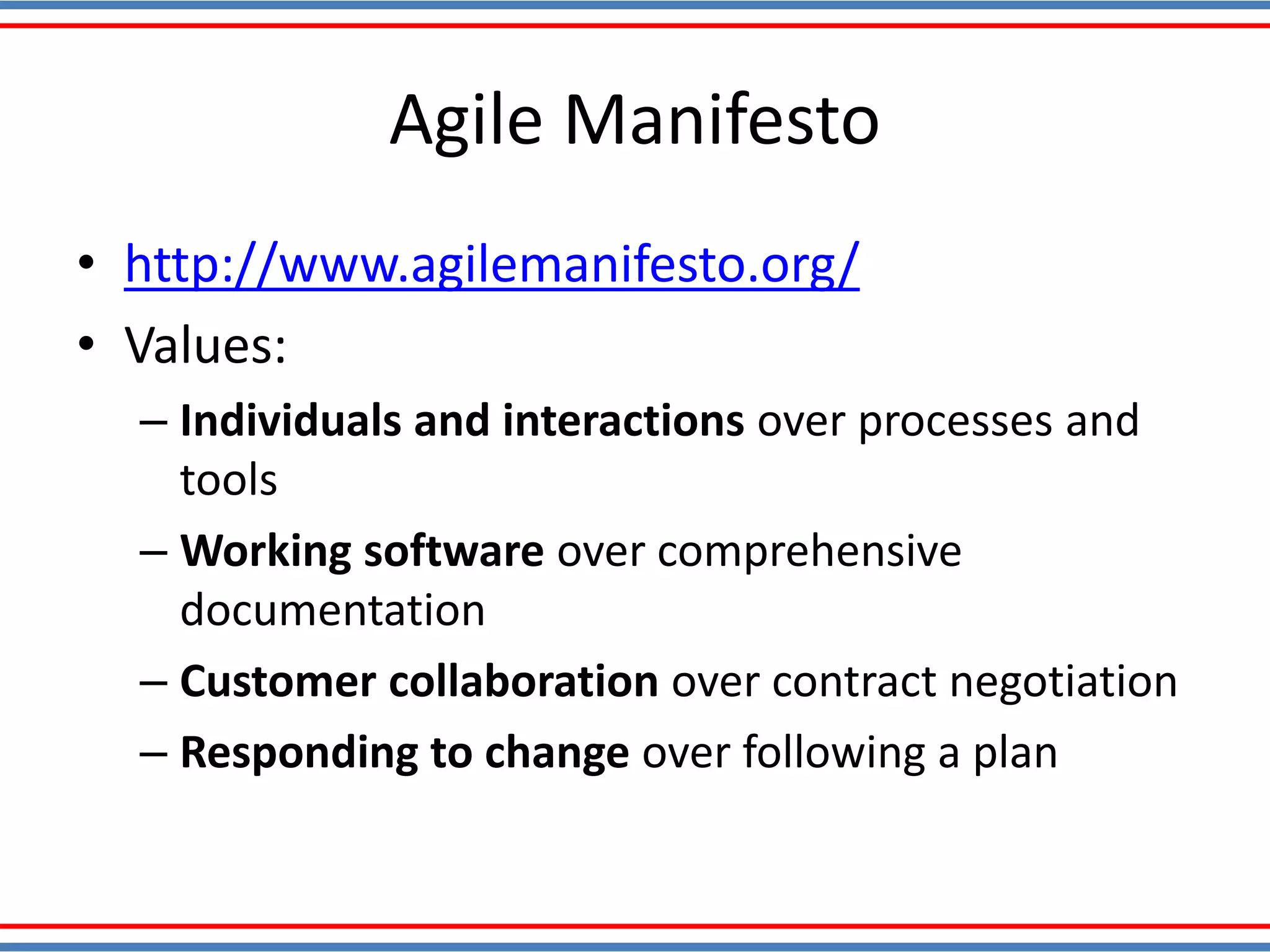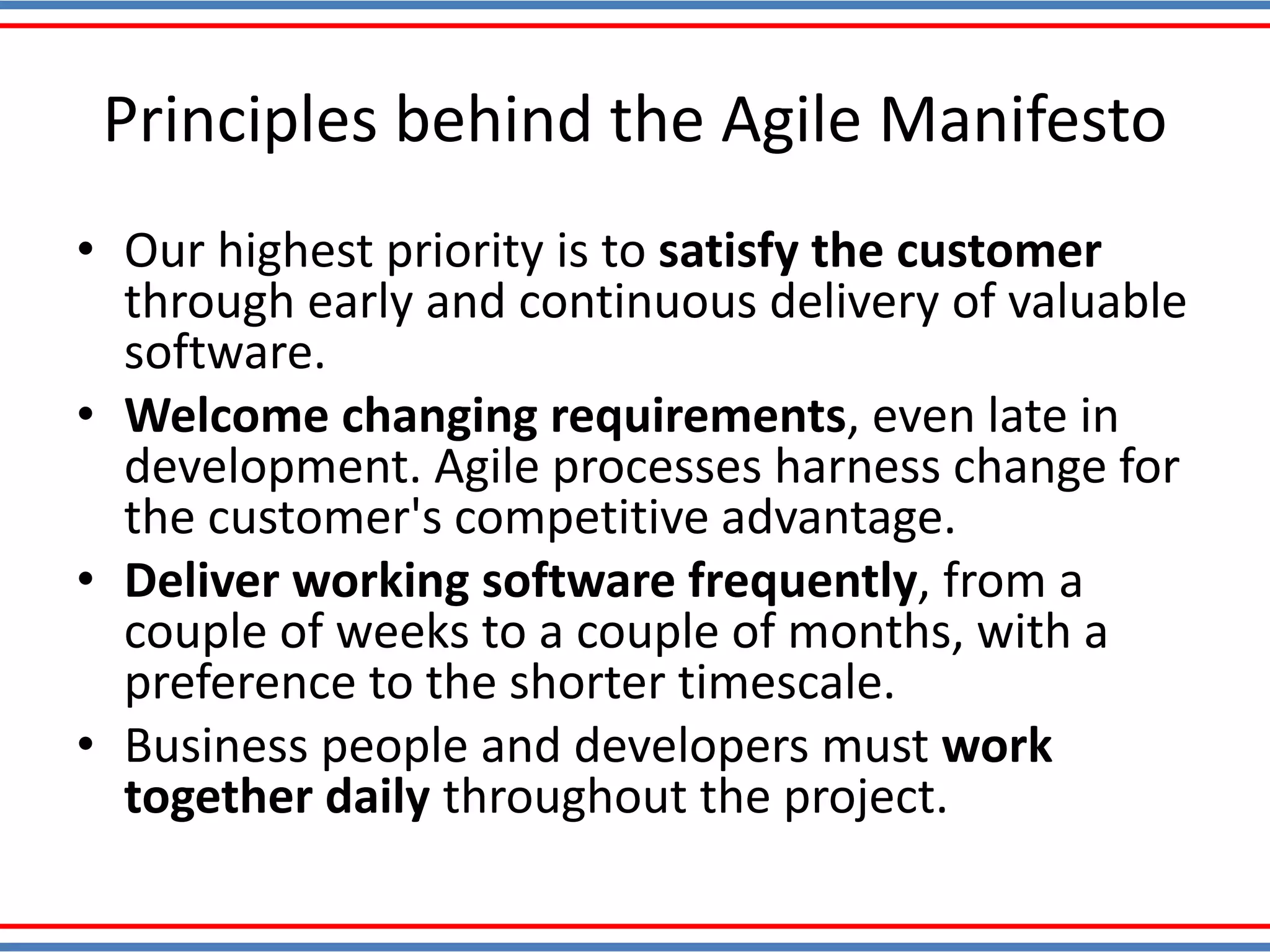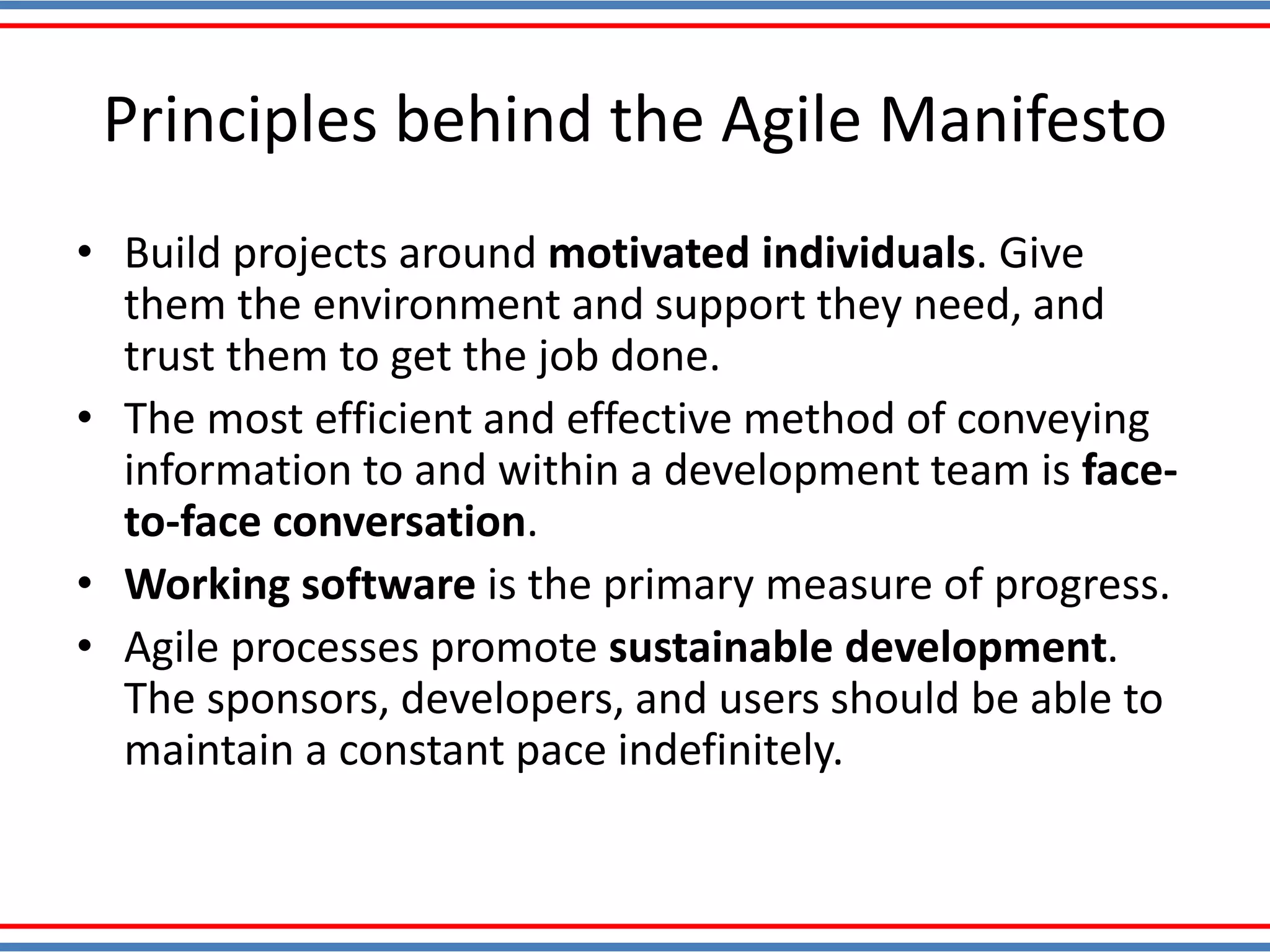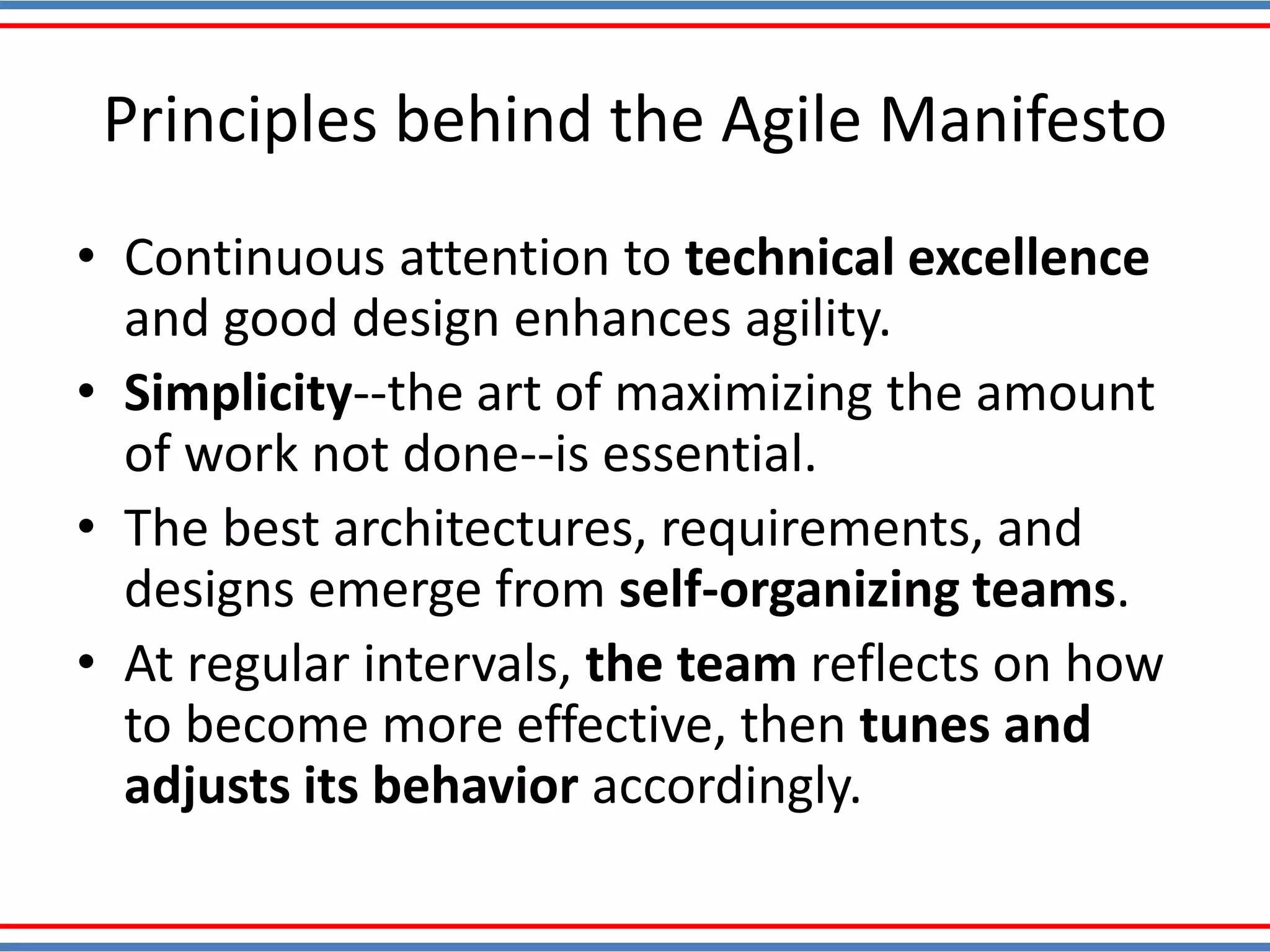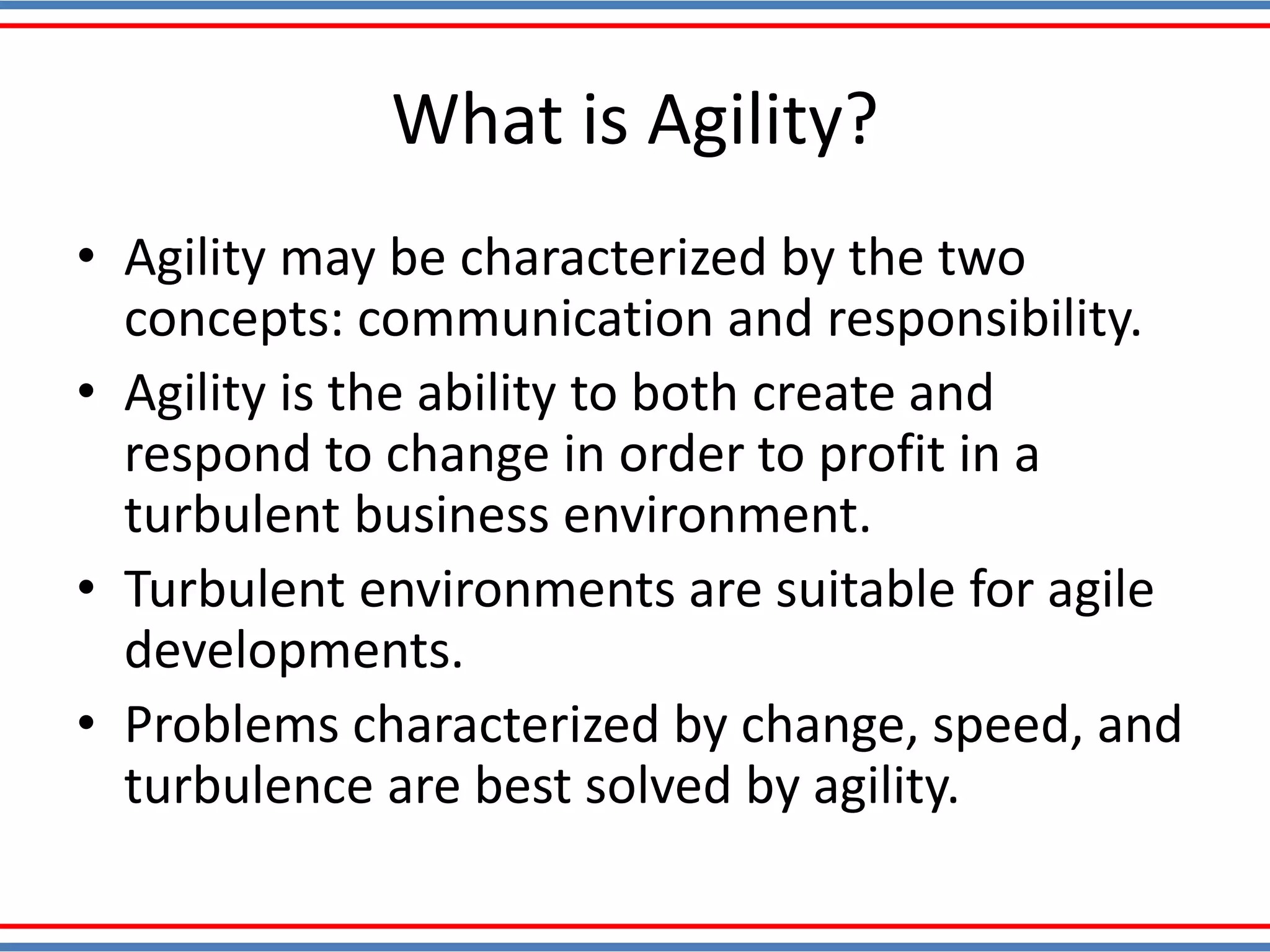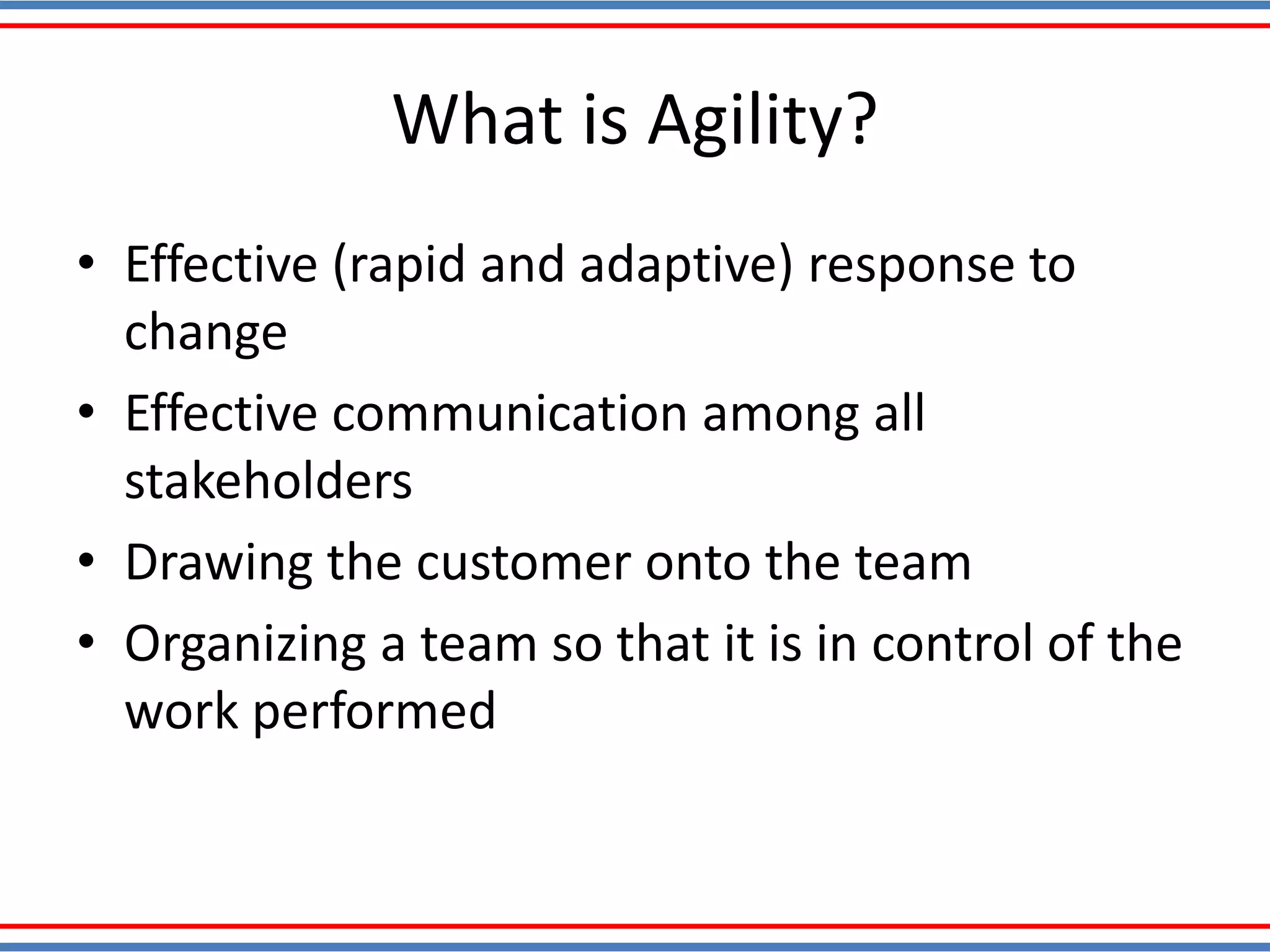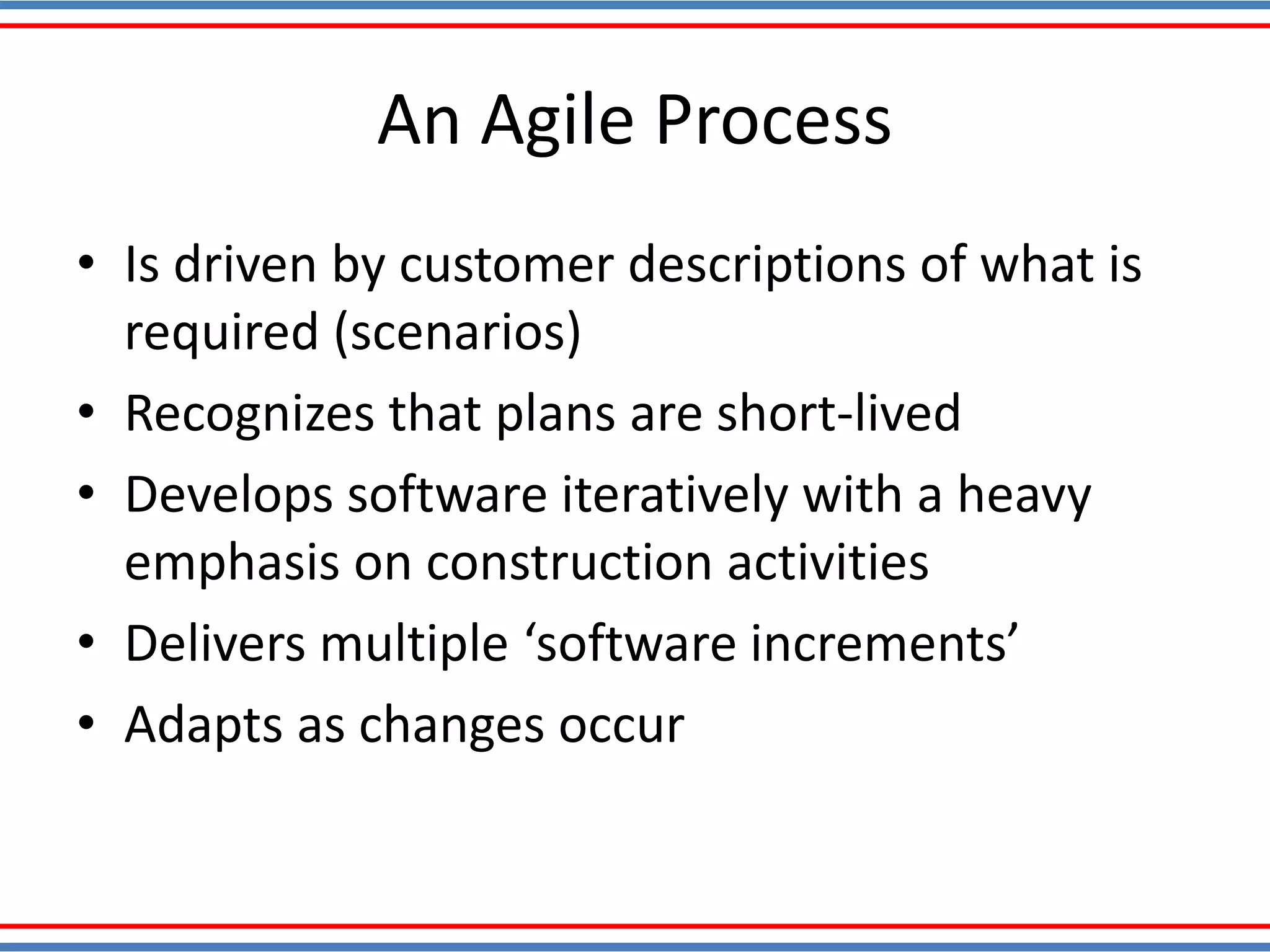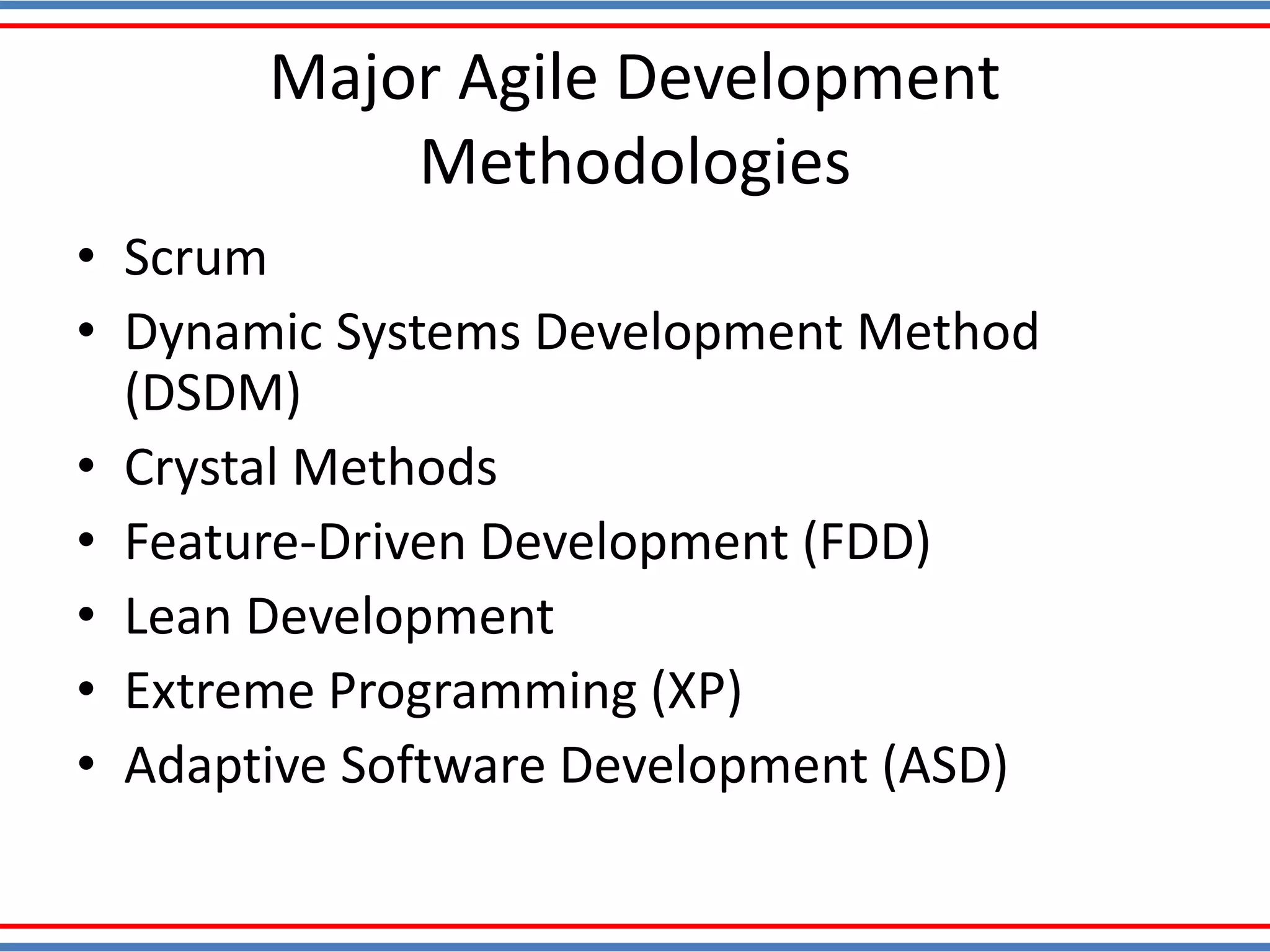Agile software development values individuals, working software, customer collaboration, and responding to change over processes, documentation, contract negotiation, and following a plan. The key principles are satisfying customers through early delivery, welcoming changing requirements, frequent delivery of working software, business and developers working daily together, trusting motivated individuals, face-to-face communication, working software as the primary measure, sustainable development, technical excellence, simplicity, self-organizing teams, and continuous improvement. Agility means effective communication and responsibility to profit from change, and agile processes are driven by customer requirements, adapt to changes, deliver software iteratively, and adapt continuously. Major agile methodologies include Scrum, DSDM, Crystal Methods, FDD,

